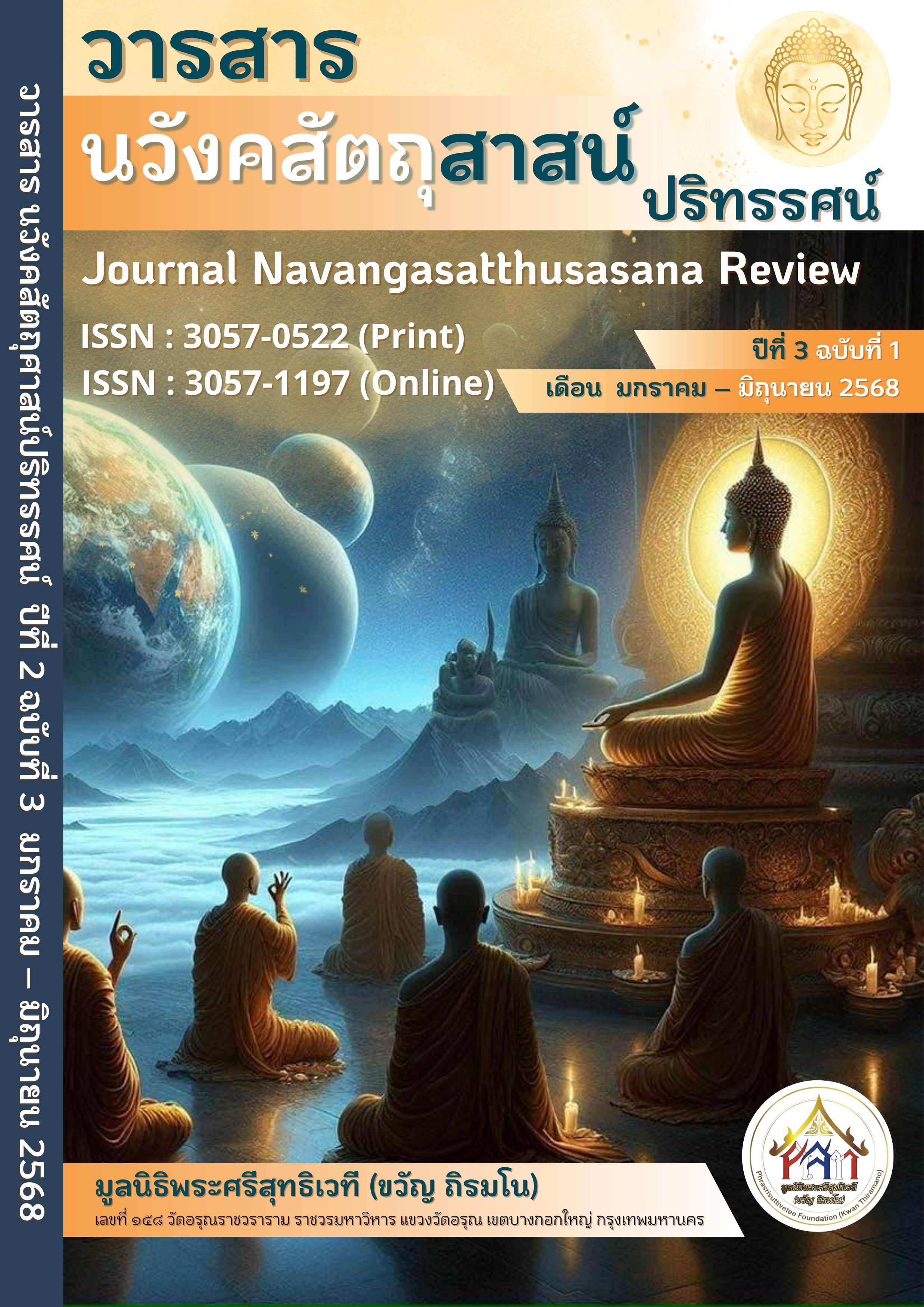The Development of Pāna from the Buddhist Era to the Present Day
Main Article Content
Abstract
This article explores the development of "Pana" (a type of permissible drink for Buddhist monks) in Buddhism from the time of the Buddha to the present day. The objectives are to study the principles and concepts of Pana in Buddhist scriptures and to examine its development over time. The study reveals that during the Buddha's era, Pana, made from fruits, leaves, or flowers, was permitted for the monastic community as a drink to quench thirst and alleviate hunger during the off-mealtime. This was governed by various principles and restrictions related to the monastic discipline (Vinaya), such as the types of ingredients, preparation methods, and consumption. Over time, Pana has undergone changes and developments in response to societal contexts, technology, and the diversity of contemporary beverages. Some modern drinks can be considered permissible Pana, while others are more challenging to categorize. Understanding the original principles of Pana is crucial for evaluating present-day beverages. This article suggests further study of Pana from historical and scientific perspectives to enhance societal awareness of its true benefits.
Article Details

This work is licensed under a Creative Commons Attribution-NonCommercial-NoDerivatives 4.0 International License.
เนื้อหาและข้อมูลในบทความที่ลงตีพิมพ์ในวารสาร นวังคสัตถุสาสน์ปริทรรศน์ถือเป็นข้อคิดเห็นและความรับผิดชอบของผู้เขียนบทความโดยตรงซึ่งกองบรรณาธิการวารสาร ไม่จำเป็นต้องเห็นด้วย หรือร่วมรับผิดชอบใด ๆ บทความ ข้อมูล เนื้อหา รูปภาพ ฯลฯ ที่ได้รับการตีพิมพ์ในวารสาร นวังคสัตถุสาสน์ปริทรรศน์ถือเป็นลิขสิทธิ์ของวารสาร นวังคสัตถุสาสน์ปริทรรศน์หากบุคคลหรือหน่วยงานใดต้องการนำทั้งหมดหรือส่วนหนึ่งส่วนใดไปเผยแพร่ต่อหรือเพื่อกระทำการใด ๆ จะต้องได้รับอนุญาตเป็นลายลักอักษรจากวารสาร นวังคสัตถุสาสน์ปริทรรศน์ก่อนเท่านั้น
References
________. พระไตรปิฎกภาษาไทย ฉบับมหาจุฬาลงกรณราชวิทยาลัย. กรุงเทพมหานคร : โรงพิมพ์มหาจุฬาลงกรณราชวิทยาลัย, 2539.
กรมการส่งเสริมการค้าระหว่างประเทศ,เครื่องดื่ม (ทุกประเภท). [ออนไลน์]. แหล่งที่มาhttps://www.ditp.go.th/contents_attach /780251/780251.pdf.[31 มกราคม 2567].
ประยุทธ์ หลงสมบุญ. พจนานุกรมมคธ-ไทย. พิมพ์ครั้งที่ 2. กรุงเทพมหานคร : บริษัท ธรรมสาร จำกัด, 2546.
พระเจ้าบรมวงศ์เธอ กรมพระจันทบุรีนฤนาถ. ปทานุกรม บาลี ไทย อังกฤษ สันสกฤต ฉบับพระเจ้าบรมวงศ์เธอ กรมพระจันทบุรีนฤนาถ. พิมพ์ครั้งที่ 6, กรุงเทพมหานคร : มหามกุฎราชวิทยาลัย, 2564.
พระพรหมคุณาภรณ์ (ป.อ. ปยุตฺโต). พจนานุกรมพุทธศาสน์ ฉบับประมวลศัพท์. พิมพ์ครั้งที่ 11.กรุงเทพมหานคร : บริษัท เอส. อาร์. พริ้นติ้ง แมส โปรดักส์ จำกัด, 2551.
พระมหาโพธิวงศาจารย์ (ทองดี สุรเตโช). พจนานุกรม เพื่อการศึกษาพุทธศาสน์. พิมพ์ครั้งที่ 5 , กรุงเทพมหานคร : ธรรมสภาและสถาบันบันลือธรรม, 2553.
พระมหาโพธิวงศาจารย์ (ทองดี สุรเตโช). ศัพท์วิเคราะห์. พิมพ์ครั้งที่ 4, กรุงเทพมหานคร :สำนักพิมพ์เลี่ยงเชียง เพียรเพื่อพุทธศาสน์ จำกัด, 2558.
มหาจุฬาลงกรณราชวิทยาลัย. พระไตรปิฎกภาษาบาลี ฉบับมหาจุฬาเตปิฏกํ 2500. กรุงเทพมหานคร : โรงพิมพ์มหาจุฬาลงกรณราชวิทยาลัย, 2535.
มหามกุฏราชวิทยาลัย. พระไตรปิฎกและอรรถกถาแปล ชุด 91 เล่ม. กรุงเทพมหานคร : โรงพิมพ์มหามกุฏราชวิทยาลัย, 2534.
ราชบัณฑิตยสถาน. พจนานุกรม ฉบับราชบัณฑิตยสถาน พ.ศ. 2542. พิมพ์ครั้งที่ 1, กรุงเทพมหานคร : นามมีบุ๊คส์พับลิเคชั่นส์, 2546.

